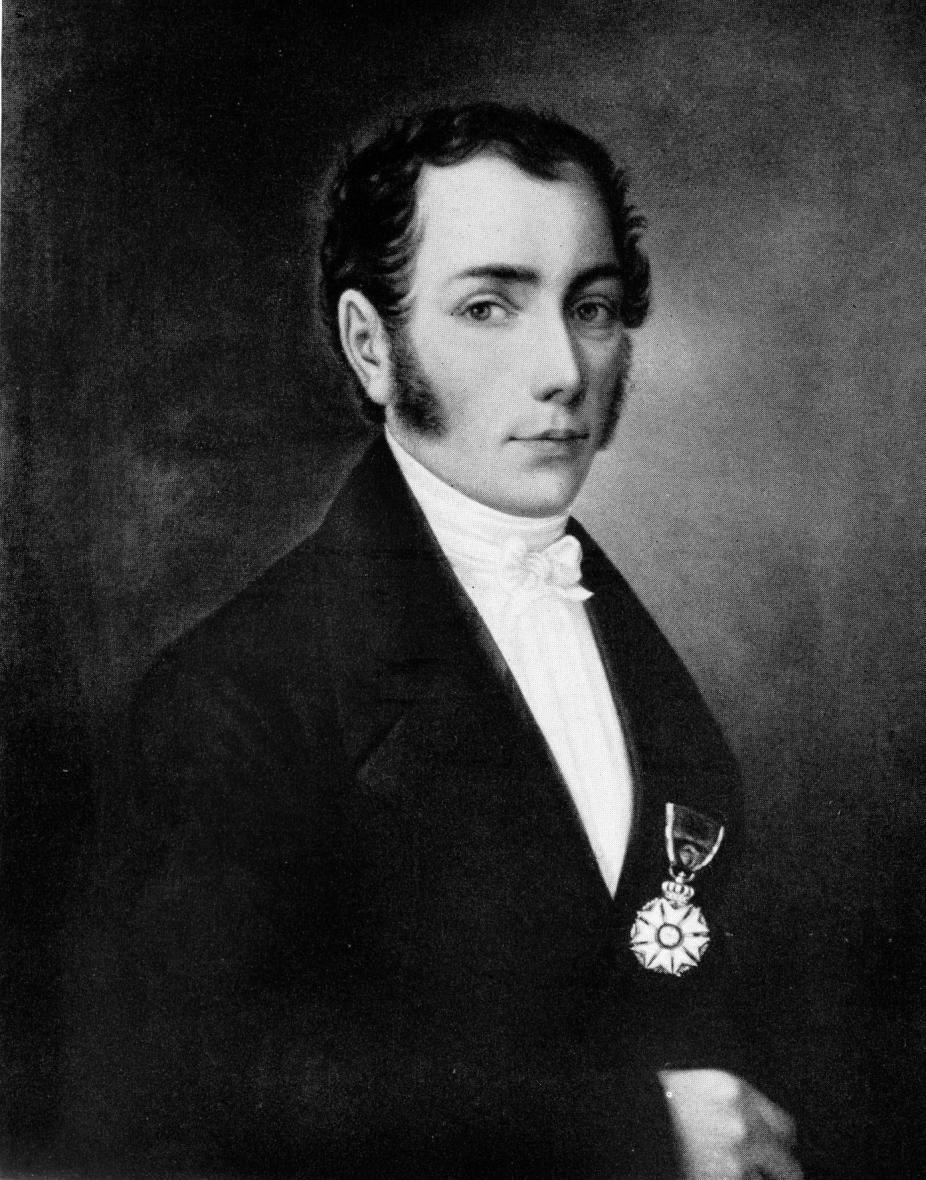Joseph von Fraunhofer (1787–1826)
Joseph von Fraunhofer was born in Straubing, Bavaria, on March 6, 1787. Orphaned at the age of 11, he did an apprenticeship as a lens and mirror maker, after which he worked in a Munich company making scientific instruments. He learned mathematics and became very skilled in applied optics. He was active in the Bavarian Academy of Sciences, where his skills in applied optics attracted attention.

Etching of Joseph von Fraunhofer.
Wikipedia
From 1812 to 1814 Fraunhofer designed achromatic objective lenses for telescopes, which required the accurate determination of refractive indices of optical glasses. Examining the spectrum of solar light passing through a thin slit, he noticed a multitude of dark lines. Isaac Newton had not noticed the dark lines in 1666 because he shone light from the whole solar disk through a circular hole into his prisms. They had been noticed in 1802 by William H. Wollaston, who, however, recorded the presence of only seven dark lines. Aware that some of these lines could be used as wavelength standards, Fraunhofer accurately measured the position of 324 of the 500 or so lines he could see in his solar spectrum. He labeled the most prominent spectral lines with letters, establishing a nomenclature that survives to this day.
In 1821 Fraunhofer built the first diffraction grating, comprised of 260 close parallel wires. Well versed in the mathematical wave theory of light, Fraunhofer used his diffraction grating to actually measure the wavelength of specific colors and dark lines in the solar spectrum. He also built and studied reflection gratings.
Fraunhofer did succeed, in 1817, in designing an achromatic objective lens. With minor modifications, his design is still in use today. In 1823 he was appointed director of the Physics Museum in Munich and received the (honorary) title of Professor. He died of tuberculosis in Munich on June 7, 1826.
Bibliography
Porter, R. (ed.) 1994, The Biographical Dictionary of Scientists, Oxford University Press.
Herrmann, D.B. 1973, Geschichte der Astronomie von Herschel bis Hertzsprung (trans. K. Krisciunas, The History of Astronomy from Herschel to Hertzspring), Cambridge University Press, 1984).